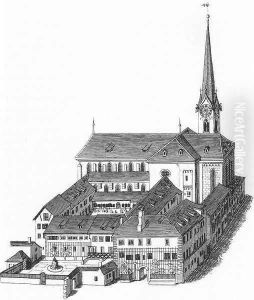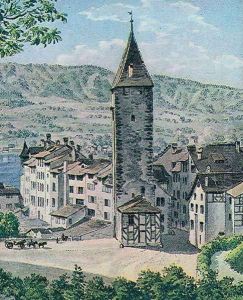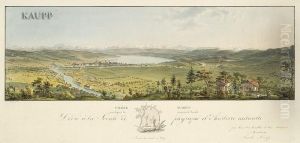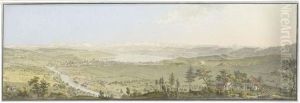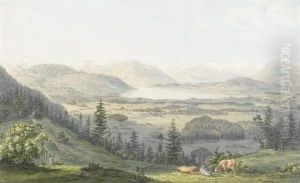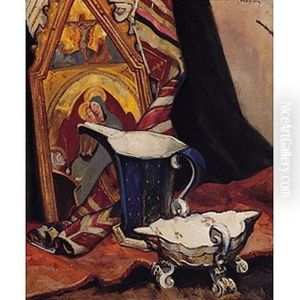Heinrich Keller Paintings
Heinrich Keller was a Swiss artist, born in Zurich on March 27, 1778. His contributions to the world of art were primarily in the realms of drawing, watercolor painting, and engraving. Keller's work is emblematic of the early to mid-19th century European art scene, particularly within Switzerland, where he captured both the natural beauty of the landscape and the burgeoning urbanization of the period. His art offers a window into the cultural and social milieu of his time, portraying not just the physical spaces but also imbuing them with a sense of the contemporary aesthetic and societal values.
Keller's artistic journey began under the tutelage of his father, who was also an artist. This early exposure to art and craftsmanship laid the foundation for his future career. He further honed his skills by studying in various parts of Europe, a common practice among artists of his era, which allowed them to gain exposure to different styles and techniques. Keller's travels and studies significantly influenced his artistic development, incorporating elements from the Romantic movement, which emphasized emotion and individualism, as well as a reverence for nature.
Throughout his career, Keller was prolific in his output, creating a vast number of sketches, watercolors, and engravings that depicted the Swiss landscape, its cities, and its people with a keen eye for detail and a profound appreciation for the interplay of light and shadow. His works were not only artistic endeavors but also served as valuable historical records of the changing landscapes and urban expansion of Switzerland during his lifetime.
Keller's contributions to Swiss art were recognized by his contemporaries, and his legacy has endured, with his works being held in high regard and featured in collections and exhibitions both in Switzerland and internationally. He passed away on November 3, 1862, in Zurich, leaving behind a body of work that continues to be celebrated for its beauty, technical skill, and historical significance. Keller's art remains a testament to his passion for capturing the essence of his homeland and its people, making him a pivotal figure in the history of Swiss art.
